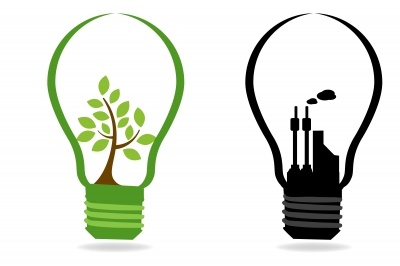Commercial buildings should be prime customers for companies selling energy efficiency services. But the commercial energy efficiency market has failed to grow close to its full potential.
The report “Getting to Yes: Scaling Comprehensive Efficiency in Commercial Buildings” provides a framework for selling energy efficiency that could push the market forward. Published in April 2018 by Northeast Energy Efficiency Partnerships (NEEP), the report was written for utilities and organizations that offer commercial energy efficiency programs.
NEEP seeks to help these organizations with a challenging question: how can they get commercial customers comfortable with projects that provide deep efficiency?
“It’s been easy enough to get commercial customers to say ‘yes’ to lighting retrofits,” said Claire Miziolek, senior manager of technology and market solutions at NEEP and lead author of the report. “Utilities are being faced with large energy-reduction goals. And the ways to get there are getting harder and harder.”
Finding success could be essential for states with ambitious carbon-reduction goals. Commercial buildings are major carbon emitters. Most of these emissions are from energy use.
According to Miziolek, deep efficiency is challenging but doable. “There's a lot of efficiency left to be had in the commercial sector, but we need to be more creative and holistic about how we get at it.” The report offers a compelling framework for achieving that.

A Framework for Selling Energy Efficiency
The report takes a “choose your own adventure” model to help energy efficiency provisioners identify sales strategies for their commercial clients.
“Different businesses have different practices and different corporate goals,” Miziolek said. Businesses with strong sustainability targets will, for example, want to hear information about carbon-emissions reductions. And if a business spends a lot of money on energy, it will find information about financial savings most compelling.
Different businesses also present different barriers. Some companies lack faith that projects will pay back quickly. Others require approval from high-level management. Still others have sales fatigue from the many energy efficiency pitches they receive.
The report clarifies this diverse marketplace by presenting four strategic approaches designed to help energy efficiency providers match a sales strategy to a new project and prospective client.
- Integrator: matches energy efficiency improvements with products such as solar, which can create a compelling case for complex but holistic projects with dramatic savings.
- Business school: frames energy efficiency as a means to improving profit margins or retaining staff by focusing on business outcomes rather than technical engineering details.
- Utility service provider: focuses on improved customer service such as exceptional account management, which is a strategy many utilities have adopted to assist ratepayers.
- Non-economic value stack: presents the importance of non-financial considerations, which is valuable because communicating the value of worker productivity and health improvements can be key.
Each strategy emphasizes the importance of thoughtfully framing the value of a project.
“The choice of language and the framing of the conversation about energy efficiency can be important barriers to progress,” the report said.
Miziolek extended this argument. “A relatively small amount of dollar savings could become a new line of profit coming in,” she said. “Suddenly, you're looking at it in a new light.”
A Strategy for Building Investor Confidence
In August 2018, NEEP hosted a webinar to publicize the report. One clear message from Miziolek and other guest speakers is that for commercial energy efficiency to scale, project benefits must be measurable and verifiable.
Measurable and verifiable projects build investor confidence. But each energy efficiency project can seem unique.
Matt Golden, CEO of OpenEE, spoke during a NEEP online event on Aug. 2 titled “Getting to Yes: Webinar on Scaling Comprehensive Efficiency in Commercial Buildings.” He said the Investor Confidence Project (ICP) certification is designed to create market confidence. The certification ensures that projects are technically sound and creates a market with common definitions.
“The challenge in the market is not finding the money, it’s finding the projects,” Golden said. ICP-certified projects can help investors become comfortable with expensive or innovative efficiency projects.
Miziolek said she agrees. Energy efficiency should bring returns like any other investment. “This is the holy grail of this work,” she said. However, she stresses the equal importance of non-financial strategies. “Things happen in parallel.”
Getting to wide-scale adoption of efficiency also depends on the sales tactics outlined in the report. “Just because there's more money out there does not mean that individual businesses are actually going to follow through with the efficiency,” Miziolek said. “How do we make sure that these proposals aren't just sitting on the desk of a business manager somewhere?”
Therefore, matching a sales pitch with the needs of the business manager is key. “Even if you have a really compelling economic argument, it's still not enough to actually get people to move forward with this work,” Miziolek said. “It's really about finding the ways to make things compelling and to bring something new to the table.”
Miziolek said she envisions a world where energy efficiency projects are normal for commercial landlords and other investors. But this will take more work. “Whether it's a new financing approach, whether it's a new technology that you're bringing to the table, whether it's just a new way of framing it, or whatever it is, we need to start getting more creative.”
This article was originally published by the Yale Center for Business and the Environment's Clean Energy Finance Forum and can be found here. This article was authored by Sam Mardell.
